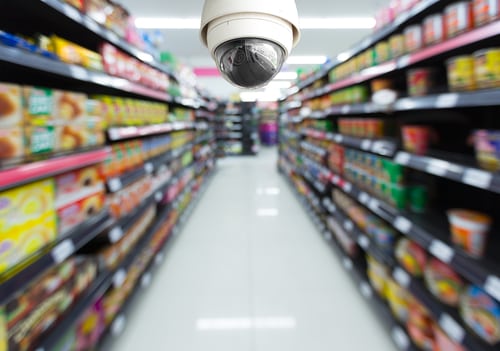
Exploring The Biggest Maintenance Challenges In The Retail Industry
By Bryan Christiansen, Founder and CEO at Limble CMMS.
The retail industry is already undergoing massive upheavals, with stores everywhere either shutting down or barely hanging on in the face of immense competition. Whether or not a small, independent retailer survives depends on their ability to create a bond with the customer, a bond that ensures repeat business and stable revenue.
Maintenance challenges such as equipment breakdowns or facilities blunders can damage the bond with the customer. And if the retailer fails to provide a consistent shopping experience in-store every single time, they can lose that customer forever.
In this article, we will look at the top maintenance issues that affect retailers today and come up with a way to solve the problems.
High Operating Expenses
It’s not cheap maintaining retail facilities, especially when you factor in the regulations involving Health and Safety. Managing and ordering spares, maintaining high product quality, and doing corrective maintenance, can all take its toll on the balance sheet if not done properly.
To ensure that a first-time customer will become a repeat customer requires a great in-store experience as well as uncompromising quality. Lighting, climate control, and the store environment play their roles in ensuring a positive experience.
Store Management Wasting Time On Maintenance
At brick and mortar stores, store management does not have the training nor the information necessary to handle facility issues and repairs. Retailers must ensure that the correct maintenance processes are in place, while empowering their maintenance staff with the right tools and training to manage the workload and inventory. Information such as what appliances break down most frequently needs to captured and analyzed in order to have countermeasures to prevent faults from disrupting sales and operations.
Operational Disruption
Retailers cannot afford disruption due to faulty or broken appliances and equipment, making preventive and predictive maintenance all the more important. By keeping track of when an appliance was purchased and then predicting the failure time based on manufacturer data, facility managers can proactively get the items serviced or swap out parts which are in danger of failing. Keeping track of the dates and parts can be an onerous task, and this is where technology comes in to help.
Risk Mitigation and Compliance
One of the biggest challenges for a retailer is not having a mitigation plan for when equipment inevitably fails or facilities aren’t functional. With a bit of planning and correct identification of the risks, major headaches that cost the retailer both time and money can be simply avoided or lessened.
Can a CMMS Solve These Problems?
A Computerized Maintenance Management System can help retailers tackle the uncertainty and risk that derives from manual processes or insufficient maintenance operations as it automates and streamlines the maintenance processes and optimizes the inventory for spare parts and tools.
Most solution also provide an inventory management system and some can even be updated with a barcode scanner. Asset data such as LED screens, HVAC systems, freezers, etc. can all be recorded and used to keep store equipment running at peak performance.
While the responsibility of maintaining the facilities and equipment in the store will ultimately lie with the maintenance team, a CMMS will make their job easier. Planning, reporting, forecasting and spare parts management will be streamlined by using the software effectively. These processes in turn will create a smoother experience for the store’s customers.
The last thing we want to highlight is that the CMMS will prevent disruptions to operations by ensuring all systems remain up and running during store working hours and minimize negative experiences in the facilities for customers.
In the current business paradigm where more and more customers are shifting to online shopping, making every in-store experience a positive one is hugely important and leads to repeat customers.
To learn more about how a CMMS can cut costs and help the bottom line, here are 31 additional reasons to use computerized maintenance management software.
Conclusion
The retail industry is being confronted with the rise of e-commerce, further reducing margins and applying pressure on small retailers to differentiate themselves from retail giants. A CMMS can help you by lowering your operating costs through better asset and facilities management, and less operational disruption. With the increased competition for customer footfall, you need to utilize every advantage to gain that competitive edge.
Bryan Christiansen is founder and CEO at Limble CMMS. Limble is a mobile first, modern, and easy to use CMMS software. We help take the stress and chaos out of maintenance by helping managers organize, automate and streamline their maintenance operations.














